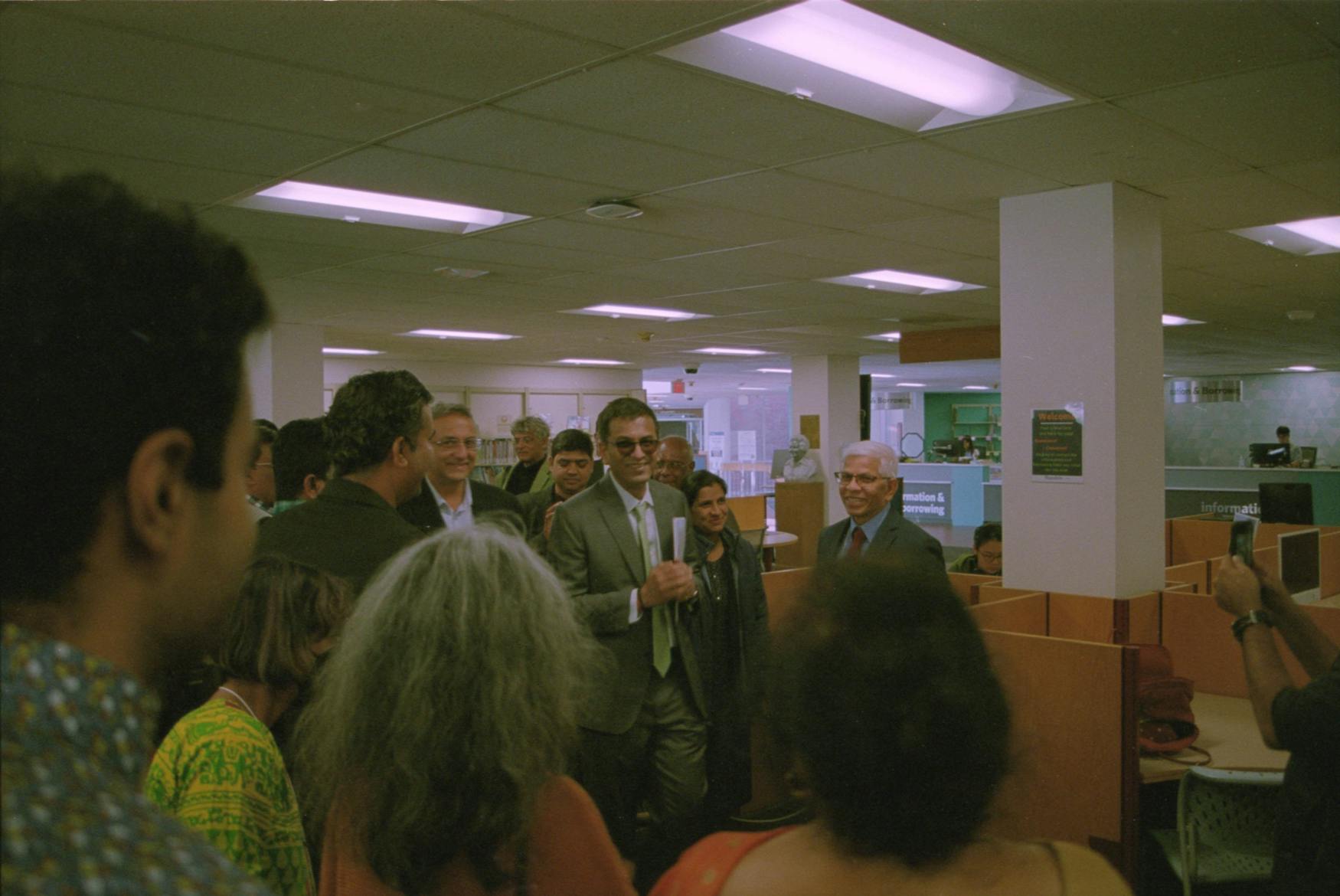Chief justice of India gives a talk, emphasizing various ideas of freedom and equality
Dr. Dhananjaya Y. Chandrachud addressed themes of oppression, liberty, and caste during a conference in Sherman Function Hall.
From Oct. 19 to Oct. 22, The Center for Global Development and Sustainability of the Heller School held the Sixth International Conference on the Unfinished Legacy of Dr. B. R. Ambedkar, one of the architects of the Indian Constitution and an advocate for people from historically disadvantaged castes in India. This conference was part of the Caste Conference series, which GDS holds annually. This year’s theme was “Law, Caste, and The Pursuit of Justice,” with keynote speaker Dr. Dhananjaya Y. Chandrachud, the chief justice of India.
Chief Justice Chandrachud was appointed to the Supreme Court of India in 2016 and became the 50th chief justice in 2022. His judicial career started as chief justice of Maharashtra, the birthplace of Ambedkar. Chandrachud went on to become the Mumbai high court chief justice until 2013. He received his Master of Law and a Doctorate of Judicial Sciences from Harvard University with a focus on affirmative action and comparative constitutional law.
Chandrachud’s father was also chief justice and had previously met Ambedkar, who earned a total of nine degrees and influenced major socio-political reform in India post-independence in spite of his status as a Dalit — the lowest level in the Hindu caste system. “Ambedkar’s work inspired me as a human being and as a justice,” Chandrachud said. One of the ideas that Ambedkar advanced was emancipatory constitutionalism. According to Chandrachud, emancipatory constitutionalism is significant because “remedying historical wrongs ought to be the goal of any constitution.” As chief justice of India, Chandrachud focuses on the protection of laborers and women, as well as religious and linguistic minorities. He emphasized that oppression was not simply the result of an individual’s actions but that the legal system often plays a pivotal role in legitimizing oppression. He gave examples from India such as slavery in Kerala only being abolished in 1855 after it became ingrained in the nation’s fabric, and the Criminal Tribes Act of 1871, which criminalized people based on their caste.
He further explained that the “need to rectify past injustice in the ongoing pursuit of equality” references several forms of historical oppression such as the transatlantic slave trade, Native American displacement, and anti-LGBTQIA+ legislation. According to Chandrachud, since marginalized people are not allowed to rise above their own oppression, oppression is institutionalized.
Chief Justice Chandrachud explored the idea of liberty and “negative conceptions of freedom,” such as someone in prison not being free and someone out of prison being free. However, there is more to freedom, or lack thereof, that is influenced if there is an economic, social or gender-related power structure against an individual. Ambedkar argued that ensuring liberty requires ensuring that people are not dominated by economic, social, or religious power.
Chandrachud also discussed how India’s Constitution seeks to correct the lingering effects of the former caste system. While he “used Article 17 [of India’s Constitution] in the quest against [caste discrimination]” and stopping discrimination against “women of menstruating age from praying in temple,” there are still upper caste dominations that impact the lives of Indian citizens.
— Editor’s Note: Justice Senior Staff Writer and Student Union Correspondent Max Feigelson contributed to the reporting of this article.



Please note All comments are eligible for publication in The Justice.